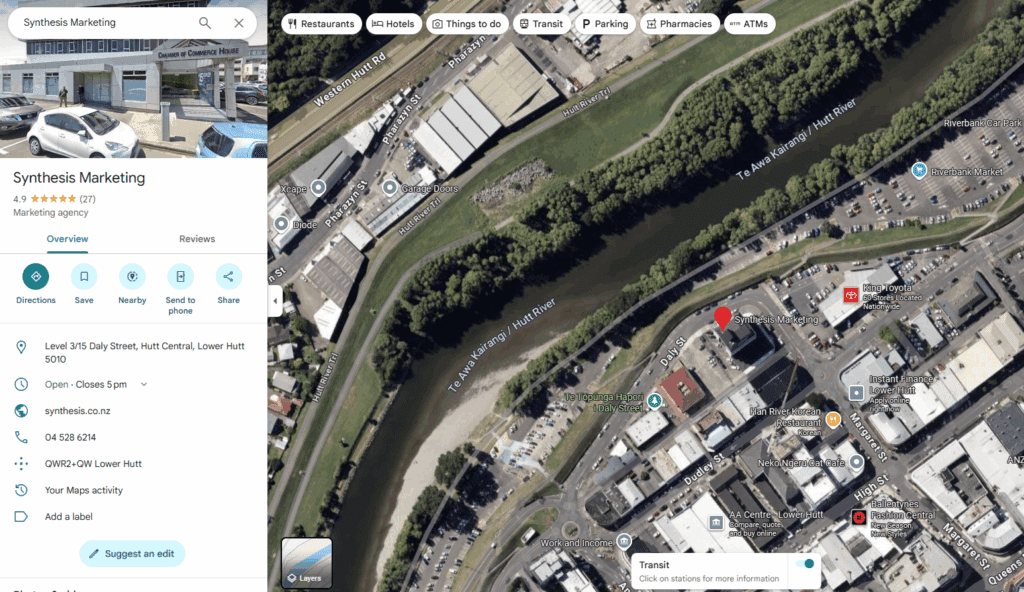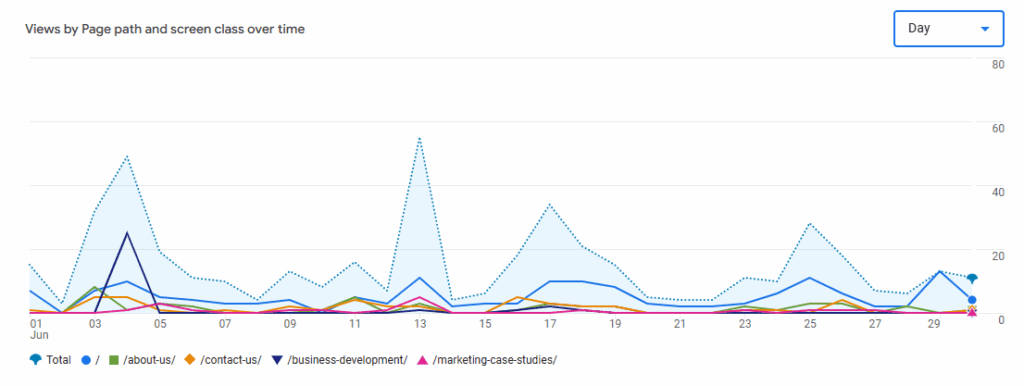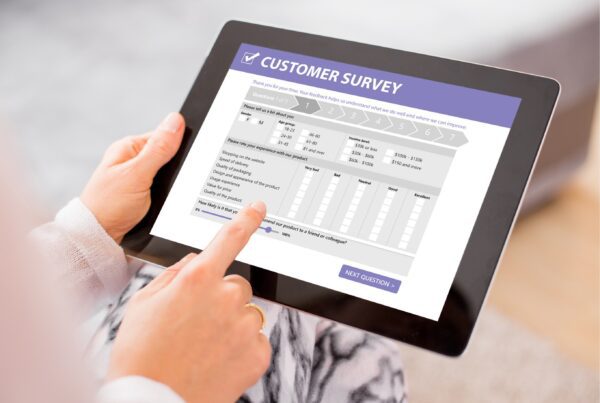Like it or not, Google dominates digital marketing globally and in New Zealand.
In September 2025, Google had around 91.3% of the search market in NZ.
So, if Google is the only game in town, you need to know how to play, but what does that mean?
There are three core Google products that all businesses with a website or a digital presence need, one of which you need even (or especially) if you don’t have a website.
The Google big three are:
-
- Google Business Profile
- Google Search Console
- Google Analytics
1. Google Business profile
Every business, whether you are online or not, should have a Google profile.
-
- It’s the main way to get found online when people are looking for your business.
- It’s how your business shows up on Google Maps if people are searching for a product or service that you offer or are just trying find your location and navigate to you.
- It’s also one of the key places where your star rating and Google reviews show up online.
If someone Googles your business, your business profile shows up on the right-hand side of the search results. Here’s ours:

Key information that you need to add to your profile include:
-
- a description with some information about your business
- contact details
- your website URL and social media details
- your location
- opening hours.
You can also add extra information such as accessibility, amenities, parking etc, which might apply to your location and the type of business you run.
Your entry business profile should look something like this on Google Maps:

1. Google Search Console
Search console is how you monitor and control your business website appearing on Google Search. The main things you use Search Console for are to:
-
- submit your website pages so Google crawls and indexes them
- check to see how well your pages are performing in searches
- check which keywords you rank for
Google crawls the web looking for new sites and pages constantly, but if you rely on Google finding your new website, or pages that you have added to an existing site by itself, it can take a long time.
Search console lets you submit a website sitemap for crawling and lets you check to see if all your pages have been crawled (found by Google) and indexed (add to its database so they show up in searches).

There can be lots of reasons why Search Console hasn’t indexed pages on your website, including URL’s that redirect to other pages, and pages where a ‘noindex’ tag tells Google not to do it. The main thing is to check to see if all your actual pages are crawled and indexed, and that none are in the ‘not indexed’ list.

If you have pages that are found but not indexed, you can request Google do it.
If you have pages that haven’t been crawled, you can check that Search Console is working with your latest sitemap, and if not, you can submit a new sitemap.
The ‘Performance’ section of Search Console lets you see how well your website is doing on Google Search including:
-
- Impressions – how many times a result from your website was shown in search results
- Clicks – how many times one of your search results got clicked on
- Average CTR (click-through-rate) – clicks divided by impressions
- Average position – where your website ranks in Search for all the keywords it ranks for (the first non-paid position in a search is #1 and there are usually 10 non-paid results on each page of search results)

Below the ‘Performance’ graph you get a table of “Queries” or terms that people are searching for. You can sort these by clicks or impressions, and if you click on a query, you can see which of your site pages it ranks on.
All this information is gold when you are trying to improve the SEO of your website.
2. Google Analytics
Analytics is where you see how well your website is performing in general.

At a basic level you can see who is coming to your website, where they come from, how long they spend and what they do when they are on your site. Useful basic information includes the performance of individual pages over time, and seeing which pages perform well as landing pages, which visitors arrive on your website at.

Analytics only tracks general information about your website. If you want to track specific events on your site, especially if you have e-commerce where you want to see events like viewing an item, adding an item to the cart, beginning checkout etc. then you need to set those up using Google Tag Manager.
Tag manager and Analytics are at the core of tracking how well your Google Ads are performing (if you run them). For digital marketing and website performance generally, and for Google Ads specifically, monthly reporting on key data and events is vital to allow you to fine tune your digital marketing and Ads campaigns.
Got the basics but need help?
So that’s it for the Google big three. While we know that this stuff can get quite technical and confusing, it’s important that you at least understand the basics of what Analytics, Search Console and Business Profile can do for your business, and why you need them.
If you need any help with any of the platforms we have covered in this blog, Synthesis have got you covered. We can help with anything from a chat to help you understand the basics a bit better, through basic system setup to managing it all on a month-by-month basis as part of a digital marketing package.
To find out more, just contact us, or come in for a chat.
Synthesis Marketing: your local, Wellington and Lower Hutt digital marketing partner.





